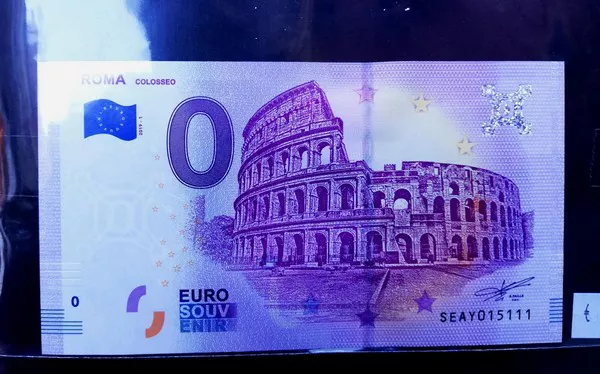In the dynamic world of international finance, exchange rates play a pivotal role in shaping economic landscapes. Investors, businesses, and travelers alike closely monitor these rates to make informed decisions. One common query that often arises is the conversion of a modest amount, such as 5 euros, into US dollars. In this article, we will delve into the intricacies of the current EUR exchange rate, providing a comprehensive analysis of factors influencing it and shedding light on the equivalent value of 5 euros in US dollars.
The Foundation: What Drives Exchange Rates?
Before delving into the specific exchange rate of 5 euros in US dollars, it’s crucial to understand the foundational factors that drive exchange rates. Exchange rates are essentially the value of one currency expressed in terms of another. These rates are determined by a myriad of factors, including economic indicators, geopolitical events, interest rates, inflation, and market sentiment.
Central banks and monetary policies also play a significant role in influencing exchange rates. For the Euro (EUR) and the United States Dollar (USD), the European Central Bank (ECB) and the Federal Reserve (Fed) are the respective authorities responsible for monetary policies. Changes in interest rates or monetary policy statements from these institutions can have profound effects on the EUR/USD exchange rate.
The Current Scenario: EUR/USD Exchange Rate Snapshot
As of the most recent data available, the EUR/USD exchange rate stands at 1.08. It’s imperative to note that exchange rates are subject to fluctuations and can change rapidly due to the aforementioned factors. Therefore, individuals seeking the latest rates should consult reliable financial news sources, central bank reports, or financial platforms.
Factors Influencing the EUR/USD Exchange Rate
Understanding the dynamics that influence exchange rates is essential for making sense of the fluctuations in the EUR/USD pair. Here are some key factors that contribute to the movement of this exchange rate:
Interest Rates: Central banks adjust interest rates to control inflation and stimulate economic growth. Higher interest rates in one currency’s region can attract foreign capital, leading to an appreciation of that currency.
Economic Indicators: Economic data such as GDP growth, employment rates, and manufacturing output can impact a country’s currency value. Strong economic indicators typically contribute to a stronger currency.
Geopolitical Events: Political stability and geopolitical events can significantly influence exchange rates. Uncertainty or instability in a region may lead to currency depreciation.
Inflation Rates: Countries with lower inflation rates generally experience an appreciation of their currency. Central banks aim to maintain stable inflation to support a strong currency.
Trade Balance: A country’s trade balance, which is the difference between exports and imports, can affect its currency value. Trade surpluses often result in a stronger currency.
Calculating 5 Euros in US Dollars: The Mathematics Behind the Conversion
Now that we have a foundational understanding of exchange rates and their determinants, let’s calculate the equivalent value of 5 euros in US dollars using the current exchange rate of 1.08. The formula for currency conversion is straightforward:
Amount in USD=5×1.08=5.4 US Dollars
This simple calculation will provide the current equivalent value of 5 euros in US dollars. It’s important to note that exchange rates are subject to change, and using the most recent rate ensures accuracy in the conversion.
Real-Time Tools for Exchange Rate Monitoring
To make informed financial decisions, individuals and businesses can leverage real-time tools and platforms that provide up-to-the-minute exchange rate information. Online financial websites, mobile applications, and financial news channels offer access to live exchange rate data, historical charts, and insightful analysis.
See Also:Current EUR Exchange Rate: What is 20 Euro to Indian Rupees
Mitigating Risks: Strategies for Dealing with Exchange Rate Fluctuations
For businesses engaged in international trade or individuals planning cross-border transactions, mitigating the risks associated with exchange rate fluctuations is crucial. Here are some strategies to consider:
Forward Contracts: Businesses can use forward contracts to lock in a specific exchange rate for a future date, providing certainty in budgeting and reducing exposure to currency risk.
Hedging Instruments: Financial instruments such as options and futures can be employed to hedge against adverse currency movements, offering a level of protection against potential losses.
Diversification: Diversifying currency holdings can help spread risk. Holding a mix of currencies in a portfolio can offset losses in one currency with gains in another.
Stay Informed: Regularly monitoring economic indicators, central bank announcements, and geopolitical developments allows individuals and businesses to anticipate potential changes in exchange rates.
Conclusion: Navigating the Currency Landscape
In conclusion, understanding the current EUR exchange rate and the equivalent value of 5 euros in US dollars requires a multifaceted approach. Exchange rates are influenced by a complex interplay of economic, geopolitical, and financial factors. Staying informed, using real-time tools, and adopting risk mitigation strategies are essential for navigating the dynamic currency landscape.
As we navigate the intricacies of the global economy, the ability to interpret and respond to changes in exchange rates becomes a valuable skill. Whether you’re an investor, a business owner, or a traveler, a nuanced understanding of currency dynamics empowers you to make well-informed decisions in an ever-evolving financial landscape.
Related Topics:
Current EUR Exchange Rate: What Is 35 Euros in Pounds?
Current EUR Exchange Rate: What Is 20 Euros in US Dollars?
Current EUR Exchange Rate: How Much Is 27 Euro to INR?
























